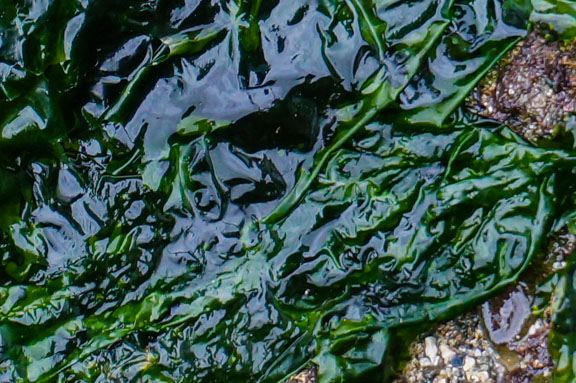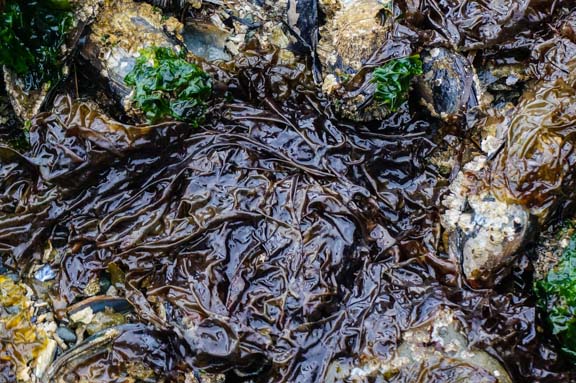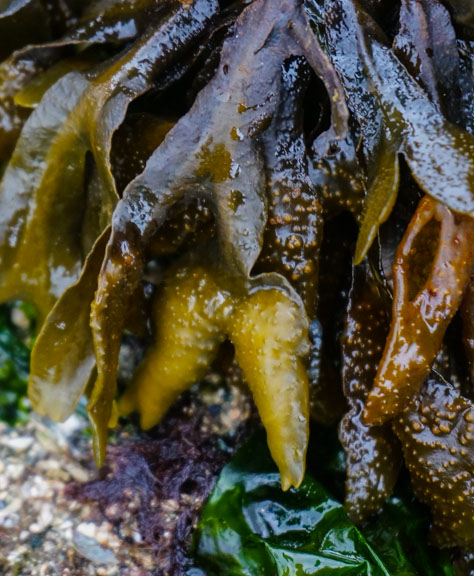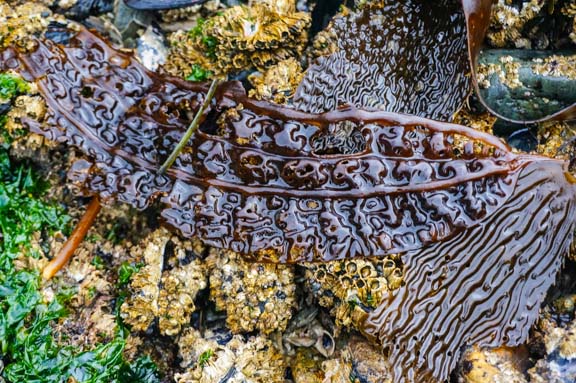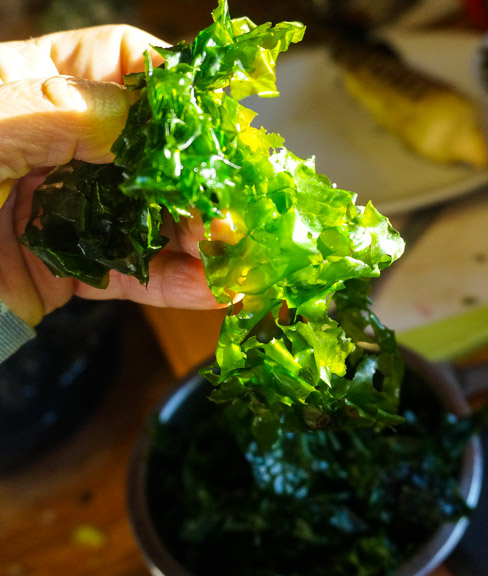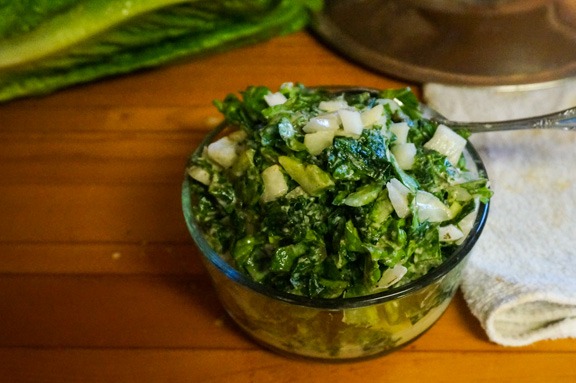 Outside my back door are vast Permaculture Zones 4 and 5, i.e., managed forests and those areas left (more or less) to be wild. It is a rare and wondrous place, and I am always cognizant of how privileged we are to live where we do.
Outside my back door are vast Permaculture Zones 4 and 5, i.e., managed forests and those areas left (more or less) to be wild. It is a rare and wondrous place, and I am always cognizant of how privileged we are to live where we do.
I think of this area as a sort of “extended” garden from the mountains to the sea, one that ventures deep into forests, wanders along river banks, skips through prairie meadows, and picks its way carefully along rocky shores. Here is where we see permaculture in action, with Mother Nature as the supreme designer and gardener.
The plants that live here are the true survivors. They are not watered, weeded, or coddled by us with our conventional and sometimes unconventional ideas. They live – and adapt – to changing conditions – or not. Plain and simple. It commands a certain respect, does it not?
I have gathered wild plants for decades, mostly in Alaska and Washington states. I used to be pretty good at identifying wildflowers and edibles described by Euell Gibbons in “Stalking the Wild Asparagus,” a statement that I am sure dates me. But I admit, despite working 14 years at a marine sciences laboratory, I have never been very good at identifying the seaweeds. So close to home! Such a richness in nutrition right out my back door – and such an extraordinary group of plants – some only a single cell thick and yet able to survive the onslaught of crashing waves, low-tide desiccation, and the pecking beaks of seabirds.
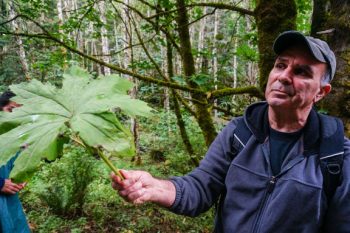 So it was quite an opportunity last year when “Mac” McClellan Smith offered a foraging class that would cover both common upland plants and our coastal seaweeds. Mac is a well-known ethnobotanist, naturalist, photographer, and kayak guide; his photographs have been used in several books and field guides. I decided to do a blogpost about that event because he is offering another class soon, and if you are in the area, I highly encourage you to attend. (More on the class at the end of this article.)
So it was quite an opportunity last year when “Mac” McClellan Smith offered a foraging class that would cover both common upland plants and our coastal seaweeds. Mac is a well-known ethnobotanist, naturalist, photographer, and kayak guide; his photographs have been used in several books and field guides. I decided to do a blogpost about that event because he is offering another class soon, and if you are in the area, I highly encourage you to attend. (More on the class at the end of this article.)
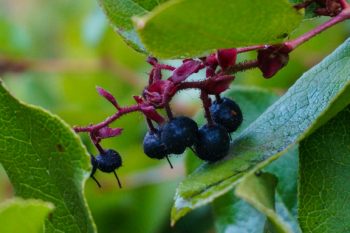 We met on an August morning before low tide, which gave us time to explore nearby hills for salal berries, cloudberries, huckleberries, trailing blackberries, and assorted greens. Thistle is admittedly a bit fiddly to finagle, but good to know about if you are hungry. It was surprising how much we could find just off the gravel road, and good to learn about which plants have traditional medicinal value. This was a full half of the field trip, and well worth another writing, but in this blogpost, I’d like to focus mainly on the second half, which involved identifying and collecting seaweeds.
We met on an August morning before low tide, which gave us time to explore nearby hills for salal berries, cloudberries, huckleberries, trailing blackberries, and assorted greens. Thistle is admittedly a bit fiddly to finagle, but good to know about if you are hungry. It was surprising how much we could find just off the gravel road, and good to learn about which plants have traditional medicinal value. This was a full half of the field trip, and well worth another writing, but in this blogpost, I’d like to focus mainly on the second half, which involved identifying and collecting seaweeds.
 Mac led us out in the sheltered alcove of Freshwater Bay, just west of Port Angeles, toward Bachelor Rock, a large solitary rock that juts up at the west end. What is there not to love about a walk on the beach? The smells, the taste of salt in the air, the myriad of colors and textures, and all the amazing creatures, from anemones in tidepools to wary-eyed seabirds. The sheer abundance of life is everywhere; we find ourselves avoiding stepping on the barnacles and cringing at hearing the crunch beneath our feet when we do. I have been to this site many times on foot and by kayak; it is always new and wondrous.
Mac led us out in the sheltered alcove of Freshwater Bay, just west of Port Angeles, toward Bachelor Rock, a large solitary rock that juts up at the west end. What is there not to love about a walk on the beach? The smells, the taste of salt in the air, the myriad of colors and textures, and all the amazing creatures, from anemones in tidepools to wary-eyed seabirds. The sheer abundance of life is everywhere; we find ourselves avoiding stepping on the barnacles and cringing at hearing the crunch beneath our feet when we do. I have been to this site many times on foot and by kayak; it is always new and wondrous.
About Seaweeds
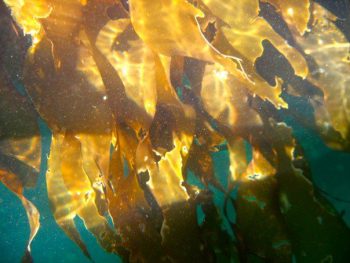 Volumes have been written about seaweeds, so I will try not to do that here – but it is fun to learn about these unique “plants” and be able to identify a few varieties, which then leads to learning about more varieties, and then more, until you evolve into something covered with kelp and crustaceans, rising up from Davy’s Locker, like this man here.
Volumes have been written about seaweeds, so I will try not to do that here – but it is fun to learn about these unique “plants” and be able to identify a few varieties, which then leads to learning about more varieties, and then more, until you evolve into something covered with kelp and crustaceans, rising up from Davy’s Locker, like this man here.
Actually, seaweeds are not officially plants, although we might think of them that way. They are macroalgae. Some, such as the Ulva spp., are only one or two cells thick and form large sheets. Others, like the giant kelp, are the fastest growing organisms in the world, sometimes growing an amazing 2 feet per day! All have adapted to extreme conditions and changing environments, each with an individual niche in the environment.
Sea lettuce, dulse, bladder wrack, bull kelp, nori, kombu, wakame – if you are a seaweed fan, these are your friends. Alaria, ulva, porphyra – the vowels roll off the tongue. The good news is, none are poisonous (although the waters in which they live might be – so be conscientious in that respect). Part of the fun is exploring their uses, getting to know their personalities, and determining what works best.
Seaweeds are generally classified in very simple terms: green, brown, and red. The colors coincide both with where they live, from high to low along the shore, and the pigmentation they have developed corresponding to differing light availability. Of course, many other factors affect what band of the shoreline you might find them – things such as salinity, wave action, predators, etc. – but in general, look for greens in the higher areas, browns in the mid- to low intertidal, and reds down deeper. Seaweeds cling to rocks; sandy beaches don’t give them anything to grab on to. They grow best in areas where colder waters and strong currents bring in more nutrients.
The best times to harvest are in the spring and fall, a few days on either side of a full moon. Check the tide tables to follow the tide out to maximize your time at low tide. Always be aware that once the tide starts coming in, it comes in pretty fast. It is easy to get mesmerized by the tide pools and suddenly realize the shoreline is now quite narrow in places, and you might have to scramble over rocks or get wet to get back! Don’t let that happen to you!
Ecological Considerations:
Of course, mindful harvesting only makes sense: take only what you need. A little goes a long way. Harvest a little here and a little there. Never clear out an area. Never yank the algae from the rocks – it will lose its anchor and die. Instead, cut the upper third of the algae with a knife or scissors so it can grow back. That way, you are also leaving some habitat for limpets and other small creatures. It may seem like there is a lot out there, and that seaweeds often end up in smelly sand-flea-ridden piles at the high-tide line, but it is all part of a dynamic ecosystem. We are visitors here, after all.
Some Common Seaweeds at Freshwater Bay
Some Common Seaweeds at Freshwater Bay
Seaweed Varieties
Here are a half dozen basic, easy-to-identify seaweeds to get you started:
Upper & Mid Zones:
Sea Lettuce (Ulva lactuca) is a vibrant lime green and grows on rocks higher along the shore. If you get it when the water splashes over, it will be less likely to be dried out or to have as much sand caught in the folds. It is ok to eat fresh – not too tough – and Mac made a wonderful dish with sea lettuce, yogurt, and lime – perhaps it even had a bit of cucumber. It can be very versatile when it is dried and sprinkled over stir-fries and such.
Rockweed, aka Bladderwrack (Fucus distichus, aka Fucus gardneri), a green-brown algae, is very common on the rocks. Note the flat fingers, some ending in little air “bladders” that help them float and are fun to pop. We found the flat ones most delectable in a stir fry; also great added to soups. This seaweed is super high in iodine.
Nori (Porphyra spp.), a red algae, is what we commonly see in sushi rolls. It is not all that easy, though, to make it into those convenient rectangles! The Japanese have perfected the art of papermaking and similarly, the art of making nori sheets for sushi. There are many kinds of Porphyra; the kind we found during our field trip was a very thin, almost translucent, fairly wide sheet growing on the rocks and folding and unfolding with the incoming and retreating waves. We harvested these and wrapped them around a little bundle of rice and then fried them. Absolutely delicious! This nori is also one of my favorites to dehydrate, crunch into small pieces, and sprinkle on salads, over stir fries, scrambled eggs, and well, just about everything. In the UK, where a similar species is called “laver,” it is often mixed with oatmeal and fried to make what they call “laverbread.” I would like to try that one day, preferably on a rocky English coast.
Lower Zones:
 Bull Kelp (Nereocystis luetkeana) forms the undulating forests of the deeper waters, and will often float in large barges on the surface, which, by my experience, can be quite difficult to navigate a kayak through. If you ever wonder which way the tide is flowing, just look for the bull kelp. It is said to be the fastest growing organism in the world; the biomass is simply incredible. The stem can be rooted down 100 feet; at the top end of the stem is a bulb filled with carbon monoxide, which makes it float; from the bulb are multiple blades that can reach out another 60 feet or so! The stems can be sliced and pickled. Its long ribbons are great for wrapping around other foods, such as fish. And as our instructor, Mac, demonstrates, it can be used like a Swiss alpine horn, only here used to call creatures from the deep.
Bull Kelp (Nereocystis luetkeana) forms the undulating forests of the deeper waters, and will often float in large barges on the surface, which, by my experience, can be quite difficult to navigate a kayak through. If you ever wonder which way the tide is flowing, just look for the bull kelp. It is said to be the fastest growing organism in the world; the biomass is simply incredible. The stem can be rooted down 100 feet; at the top end of the stem is a bulb filled with carbon monoxide, which makes it float; from the bulb are multiple blades that can reach out another 60 feet or so! The stems can be sliced and pickled. Its long ribbons are great for wrapping around other foods, such as fish. And as our instructor, Mac, demonstrates, it can be used like a Swiss alpine horn, only here used to call creatures from the deep.
Winged Kelp (Alaria fistulosa), also known as ribbon kelp, is a brown, long-bladed kelp with wide, wavy margins and a distinct rib down the center. It has small oval blades at its base that produce spores. Similar to Japanese wakame, it is great in soups, stews, and bean dishes; it holds up with long cooking times.
Kombu, aka Oarweed (Laminaria spp.), a brown algae, is packed with flavor and is often used in soups and stews. It tends to be a bit tough and rubbery, so it is either removed at the end, or cooked further – personally, I just eat it, and it’s not all that hard to chew. It is one of those all-around seaweeds that you can put in everything – boil it, fry it, pickle it, marinate it, dehydrate and powder it. You need a good low tide to get this one. It’s worth it.
Eating Seaweeds: Nutritional Powerhouses
 Seaweeds are our best source of minerals; they have more nutrients than any other vegetable and are rich in iodine, calcium, Vitamins A and C, and protein (almost as high as legumes). Plus, they are high in antioxidants, combat inflammation, help regulate hormone levels, and are high in fiber. The sea gives us vibrant life.
Seaweeds are our best source of minerals; they have more nutrients than any other vegetable and are rich in iodine, calcium, Vitamins A and C, and protein (almost as high as legumes). Plus, they are high in antioxidants, combat inflammation, help regulate hormone levels, and are high in fiber. The sea gives us vibrant life.
But now for the part we’ve all been waiting for. For those not accustomed to eating seaweeds, the flavor might surprise you. Once rinsed in fresh water, they are generally not nearly as salty or as “fishy” tasting as you might think. Mac, our fearless leader, surprised us with a nearshore feast fit for foragers! On the menu, nori rice balls, stir-fried Fucus with veggies, and sea lettuce salad, made with a tangy yogurt dressing. I think the pictures say it all – and I will leave it up to Mac to share his special recipes with you!
Once you start getting comfortable with cooking with seaweeds, you will move beyond soups and stir-frys to puddings, pickles, and chips, and more… kale chips, move over.
Seaweed Uses:
If you need more inspiration beyond the dinner table, consider how many different ways we are already using seaweeds. The agars, carrageenans, and alginates in seaweeds are added to puddings, yogurts, ice creams, soups, assorted beauty products, toothpaste, and even German beer. They are used as fertilizers, mulch, and to jumpstart compost piles. Current research is looking at applications in biofuels and in absorbing CO2 to offset climate change. We are truly only beginning to understand the beneficial uses of seaweeds for food, medicine, and in technology. The question is, at this rate, is it sustainable?
An Intimate Connection:
We kneel down to the water’s edge, watch the little hermit crabs scamper away as we dip our hands into the cold water, cut the seaweed from its hold and gently remove anything that might be attached. We place it in our basket with our other treasures from the sea. In a moment of gratitude, we recognize that Native Americans have been doing this very same act for thousands of years. This connection with our past, not specific to First Peoples–but in a broader sense to human beings surviving along rugged coasts all around the world—is it not intrinsic to who we are? This seemingly simple act of collecting seaweeds, of watching the tide rise and fall by day and with the phases of the moon, and of timing our venture accordingly – is it not almost a sacred privilege? Is it not a connection that we must protect so that it never be broken, so that our grandchildren’s grandchildren may also one day kneel on these very same rocks and gaze with wonder into the swirling waters?
First Peoples knew which plants were good for what and when and where to find them; “primitive skills” were anything but primitive, but highly honed skills of survival. Food, medicine, fibers, shelter, tools – all made from the plants around them. This intimate understanding of the cycles of seasons, plants and animals, and all of life is being lost, and in the process, we are also losing an important part of who we are.
Obviously, not everyone can forage for wild foods and get in touch with their inner tribe. Many people in the cities do not even have access to fresh food, much less locally grown; they are completely dependent on their food being manufactured, packaged, and transported. Perhaps it is difficult for many of these people to understand why protecting wild places might be important, particularly in the face of the daily struggle of making a living wage. We live in a world dominated by computers, stock markets, politics, and fashion trends. The outer coast is, well, so “out there.” Far removed.
It is, therefore, all the more important for those of us who ARE so privileged to live near wild places, to share our experiences, the stories of our forefathers, and whatever knowledge we have gleaned along the way. When we share the connection we have to the natural world around us, we help others to also better appreciate, respect, and value our wild places. With that respect and appreciation, we build responsibility to ensure this connection remains intact – and importantly – strengthened into the future.
Treat the earth well: it was not given to you by your parents, it was loaned to you by your children. We do not inherit the Earth from our Ancestors, we borrow it from our Children.” ~Ancient Indian Proverb
“Man did not weave the web of life; he is merely a strand in it. Whatever he does to the web, he does to himself.” ~Chief Seattle, 1854.
“We must protect the forests for our children, grandchildren and children yet to be born. We must protect the forests for those who can’t speak for themselves such as the birds, animals, fish and trees.” ~Qwatsinas (Hereditary Chief Edward Moody), Nuxalk Nation
Regulations
I can’t put something out here for the world to read without this caveat. In Washington State, you need a permit to collect seaweeds. In other states and countries… I have no idea. It goes without saying (but I feel a need to say it anyway): check your local regs and follow the rules, or pay the consequences.
About the Upcoming Class on Wild Edible Plants and Seaweeds: Field Trip and Seaweed Cooking Demonstration – June 25, 2017
Mac’s class was a great jumpstart to learning about wild plants and seaweeds and was outright inspirational. He is having another one coming up on June 25, 2017, which promises a minus tide. In it, you will learn about the natural history of many of the plants and seaweeds of the Pacific Coast and inland waters of Washington State, as well as about the historical, aboriginal, and current uses for food, technology, and medicine. The field class covers how to find, ecologically collect, preserve, and use plants and seaweeds. You will also learn how to prepare special sea vegetable dishes to enjoy as snacks, soups, salads, stir fries and desserts. All this plus meeting good people for just $30.00. Class size is limited. (If you miss this one, he might also give one in July.)
It is definitely fun to go out with someone who can point to an organism, tell you what it is and how it has been traditionally used, and even cook it up for you so you can taste first hand how good it is. Can’t beat that!
Mac owns and runs the Easy Street Coffee and Tea House at 128 W 1st St, Port Angeles, WA, where he can often be found. You can also reach him by calling 360-775-5041.
About Mac Smith:
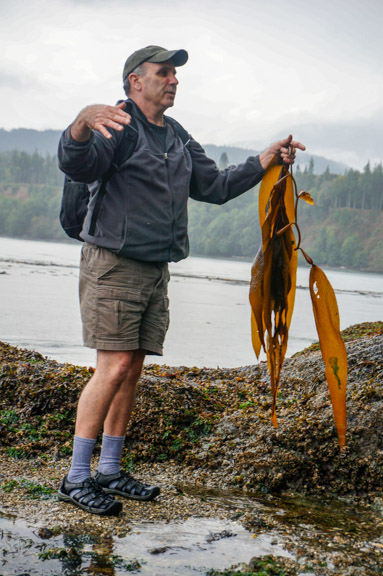 Photographer and ethno-botanist Mac Smith began studying and photographing wild plants in 1972 and has photographed thousands of plants and animals from California to British Columbia. He holds a B.A. in biology and botany and an M.A. in anthropology from Western Washington University. Mac’s aptly titled thesis, “Nutritional Implications of Some Plants and Seaweeds Gathered in the Northwest Coast Area,” sprung from his admirable ability to paddle to a remote island, camp for a month, and survive by virtue of his vast wild food wisdom, a fishing line, and olive oil. A celebrated wild foods teacher, naturalist, and kayak guide, Mac has taught outdoor field seminars, held instructor training, and given lectures for numerous institutions for over 40 years, including to the National Wildlife Federation, the National Park Service, Western Washington University, the National Science Foundation, San Juan Preservation Trust, the North Cascades Institute, Olympic Park Institute, and San Juan Nature Institute.
Photographer and ethno-botanist Mac Smith began studying and photographing wild plants in 1972 and has photographed thousands of plants and animals from California to British Columbia. He holds a B.A. in biology and botany and an M.A. in anthropology from Western Washington University. Mac’s aptly titled thesis, “Nutritional Implications of Some Plants and Seaweeds Gathered in the Northwest Coast Area,” sprung from his admirable ability to paddle to a remote island, camp for a month, and survive by virtue of his vast wild food wisdom, a fishing line, and olive oil. A celebrated wild foods teacher, naturalist, and kayak guide, Mac has taught outdoor field seminars, held instructor training, and given lectures for numerous institutions for over 40 years, including to the National Wildlife Federation, the National Park Service, Western Washington University, the National Science Foundation, San Juan Preservation Trust, the North Cascades Institute, Olympic Park Institute, and San Juan Nature Institute.
A Few Good References –
I know, I know. This is just a smattering of all the good books, websites, and other resources out there. If you have a suggestion of a tremendous resource that has really helped you in your quest for knowledge and inspiration, please let me know. Oh, and don’t forget to check your local library!
Articles
Drum, Ryan. 2008. The Medicinal Uses of Seaweeds.
Jungwirth, James M. 2014. “Sustainable Seaweed Harvest Methods.”
Books / Pamphlets
Clarkston, Bridgette. 2015. “A Field Guide to Seaweeds of the Pacific Northwest.” (A handy water-resistant pamphlet to take with you. I have this pamphlet and it has been quite useful.)
Druehl, Louis, and Bridgette Clarkston. 2016. “Pacific Seaweeds: A Guide to Common Seaweeds of the West Coast.” Harbour Publishing. (Newly revised. I do not have this book, but I want it. Badly. Everything you want to know about seaweeds and quite a bit more you didn’t even think about.)
Gunther, Erna. 1973. “Ethnobotany of Western Washington: The Knowledge and Use of Indigenous Plants by Native Americans.” University of Washington Press.
Hahn, Jennifer. 2010. “Pacific Coast Foraging Guide: 40 Wild Foods from Beach, Field, and Forest,” with photographs by Mac Smith. (Another good pamphlet field guide, handy to take along with you.)
Hahn, Jennifer. 2010. “Pacific Feast: A Cook’s Guide to West Coast Foraging and Cuisine.” Skipstone Press. (Recipes for what you gather. Photos by Mac Smith).
Kozloff, Eugene N. 1983. Seashore Life of the Northern Pacific Coast – An Illustrated Guide to Northern California, Oregon, Washington, and British Columbia. University of Washington Press, Seattle, Washington. (My favorite book on the nearshore; the ultimate field guide.
Pojar, Jim. 2016. “Plants of the Pacific Northwest Coast.” Partners Publishing. (Newly revised. I own this book; I love it; I frequently take it with me.)
Website Resources
Irish Seaweed Kitchen Seaweed Recipes: from scones to smoothies – even chocolate truffles – an Irish inspiration.
Galloway Wild Foods: An Introduction to Seaweed Foraging
Northern Bushcraft: Foraging in the Pacific Northwest
The Outer Shores: Surfperch and Nature on the Sandy Beaches. Fantastic photography.
Biodiversity of the Central Coast. Pertains to the Great Bear Rainforest of British Columbia, but very relevant to us out on the Olympic Peninsula of Washington State. Here is the link to their seaweed page.
Netarts Bay Today: Guide to Seaweeds and Seagrasses Between the Capes. About animal and plant life, geology, history, and more at Netarts Bay, between Cape Meares and Cape Lookout on the Oregon Coast.
Disclaimer:
I confess, I am just a beginner at learning about seaweeds and their uses. Fortunately, unlike the mushroom world, misidentification won’t kill you. Still, corrections from my readers are always welcome.
P.S. Full Disclosure: Some of the book links are affiliate links. If you purchase through one of these, I get a little kickback at no extra cost to you. It helps me to keep this site going, and I truly appreciate your support. Thank you.
